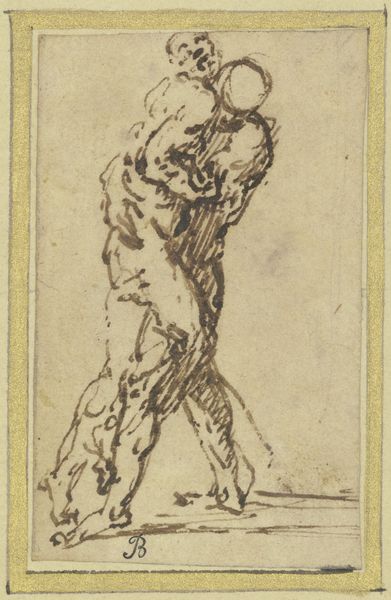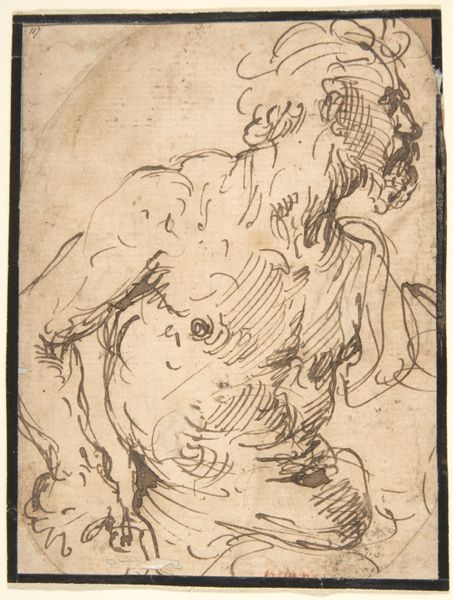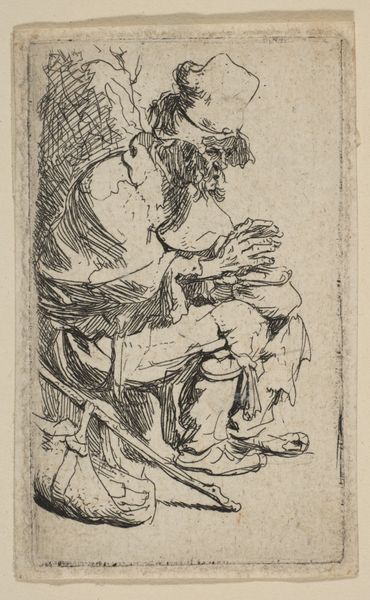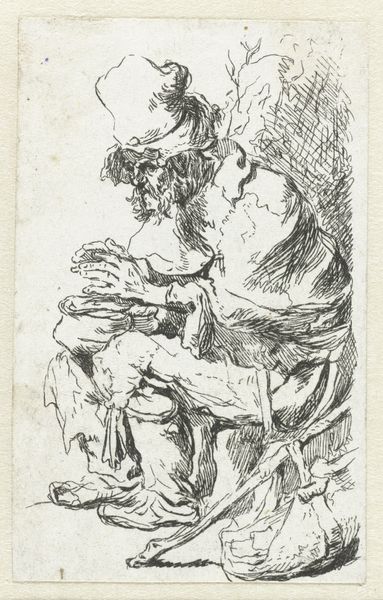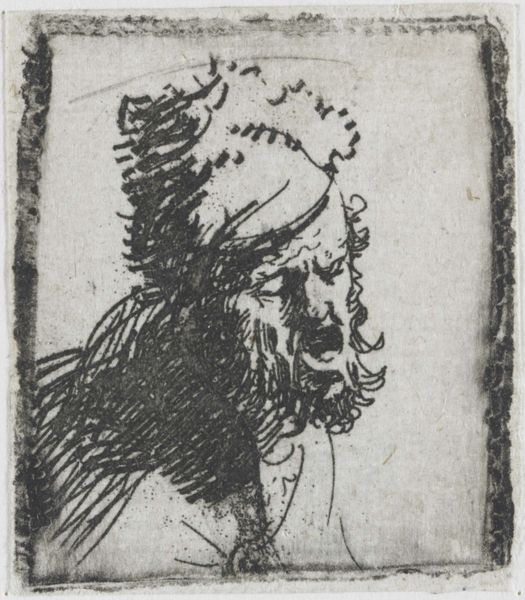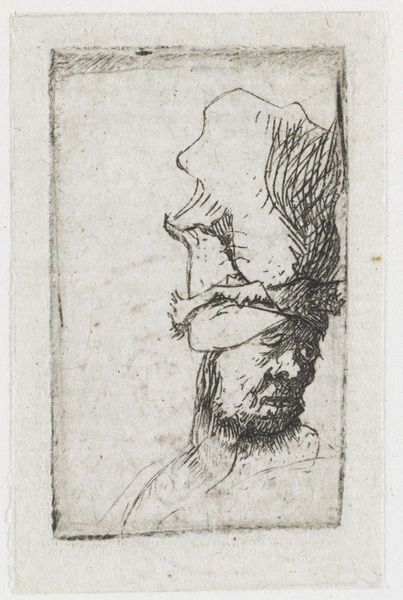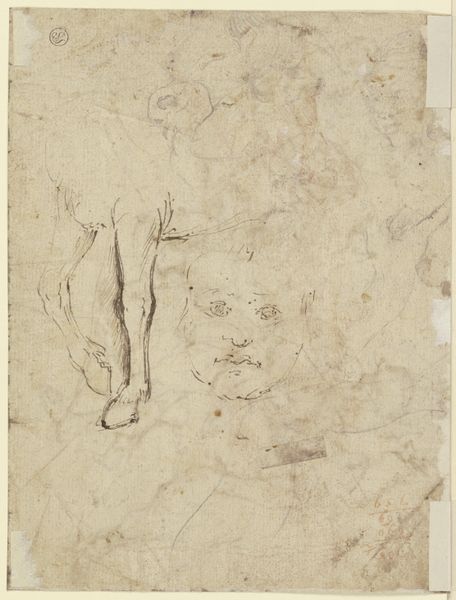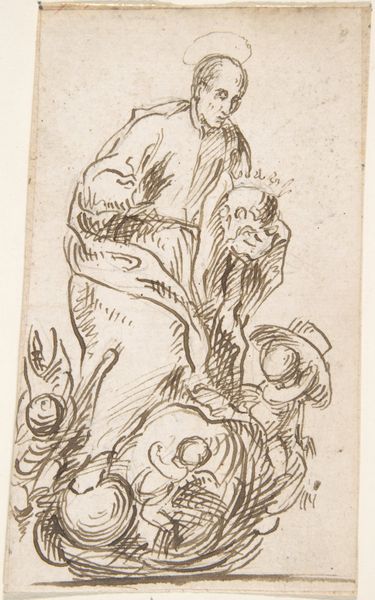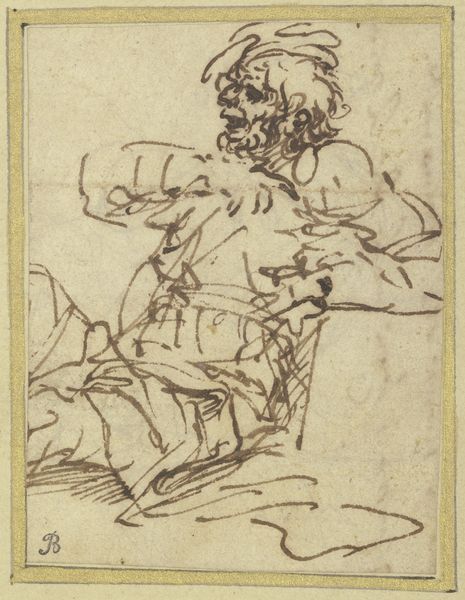
drawing, print, etching
#
portrait
#
drawing
#
baroque
# print
#
etching
Dimensions: height 36 mm, width 22 mm
Copyright: Rijks Museum: Open Domain
Curator: This etching by Rembrandt van Rijn, entitled "Head of a man in a high cap", dates back to approximately 1629 and resides here at the Rijksmuseum. Editor: Immediately striking is the subject's pensive mood; the sketchiness of the line work really underscores the weight of his brow and the uncertainty in his averted gaze. Curator: Yes, and considering it's an etching, a printmaking technique, we can see the artist’s hand involved in every line etched onto the metal plate, then inked and pressed onto the paper. The marks feel very immediate, not mediated. He wasn’t just designing, but working physically, against resistance, which informs the final piece. Editor: And in a socio-historical context, we need to consider who this man is meant to represent, what his status may have been. Is he perhaps a member of the burgher class? Rembrandt’s interest in capturing the psychological weight on his face suggests a commentary on masculinity during that era. What was that social pressure, the cultural performance that the head covering serves as a literal representation of? Curator: The headwear is definitely noteworthy. It’s less about conveying status than allowing the artist a pretext to experiment with textures, lines, and chiaroscuro. The details in that cap are amazing when you consider he’s making multiple copies through a very laborious and skilled labor-intensive printing process. Editor: Absolutely. It highlights the intersection of skill, labor and access – printing technology then meant the piece was available to far more than, say, an oil portrait on commission. One could suggest a proto-democratization of the image at work. Curator: An important detail! Examining Rembrandt's production method helps ground our appreciation. It reminds us how much labor was needed to produce even something as small as this. Editor: Ultimately, "Head of a Man in a High Cap" isn’t just an artistic statement, but a point of access to the complex socio-economic realities of its time, and perhaps even something recognizable for viewers across time. Curator: Indeed. Seeing both the means of production alongside these reflections helps us ground a reading.
Comments
No comments
Be the first to comment and join the conversation on the ultimate creative platform.

